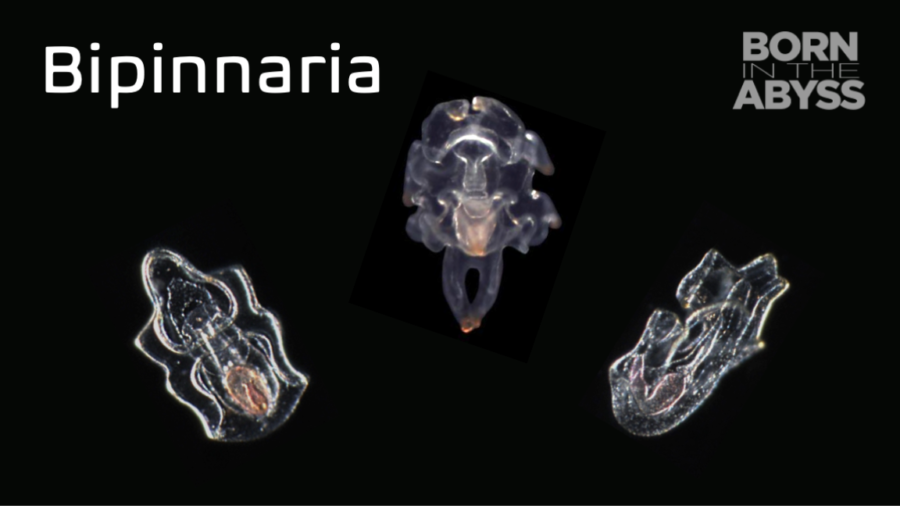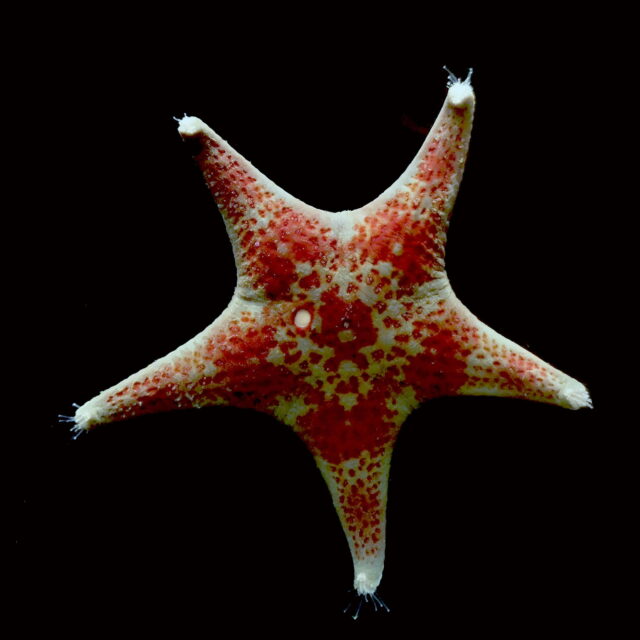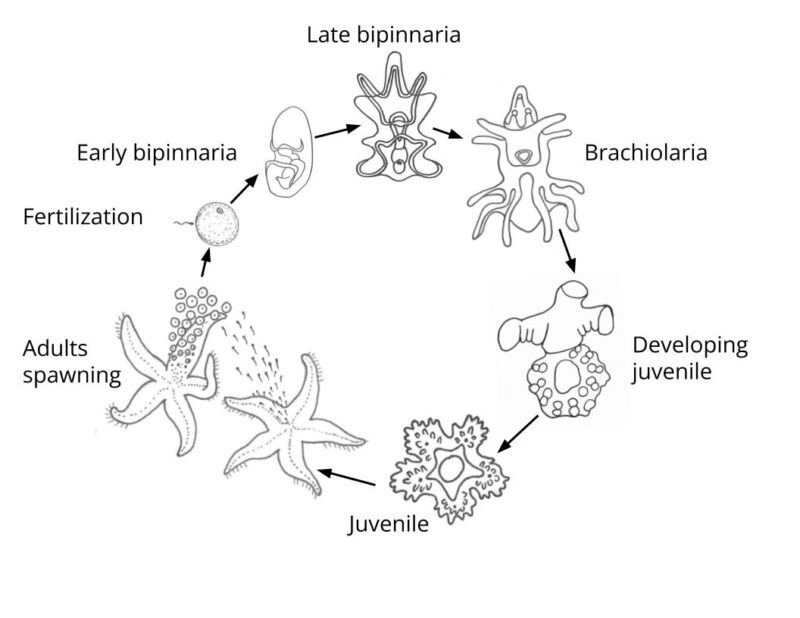
Bipinnaria Larva
From the Latin words "bi" and "pinna," which mean "two" and "feather"
Parents: Sea stars
Food: Microscopic algae called phytoplankton
Size: About 900 microns long = 0.9 millimeters = 0.04 inches

Adult sea star. Photo by McKenna Hainey
Larval Form and Function
Watch this compilation video to learn more about the movement, anatomy, and feeding of a bipinnaria larva.
Life Cycle of a Sea Star

Drawn by Nadia Stoker
- The bipinnaria larval form is only seen in some sea stars.
- Adult sea stars are typically either male or female.
- Eggs and sperm are spawning into the seawater where fertilization takes place and leads to the development of a Bipinnaria larva.
- Sea stars can exist as larvae for about two months where they feed on microscopic algae called phytoplankton until they are large enough to metamorphose into their juvenile form on the seafloor.
- Bipinnarias have complex nervous systems and some larvae can regenerate lost parts.
Larval Quest Activity
Developed by Nadia Stoker and Caitlin Plowman as outreach and education materials accompanying the Born in the Abyss film.
The Stephen Low Company
Oregon Institute of Marine Biology, University of Oregon
National Science Foundation

